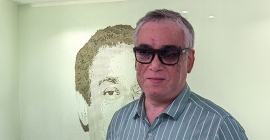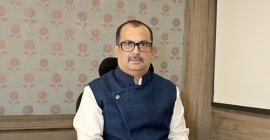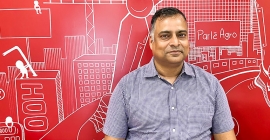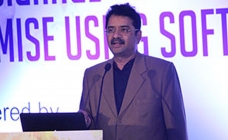A Global DOOH Stack in the making
By Rajiv Raghunath - August 23, 2022
Laetitia Lim, CEO of leading audience & campaign intelligence platform Quividi, sees DOOH transforming into a platform where tech stacks can be easily combined, and media inventories made effortlessly accessible, across geographies. Edited excerpts of the interview with Rajiv Raghunath.
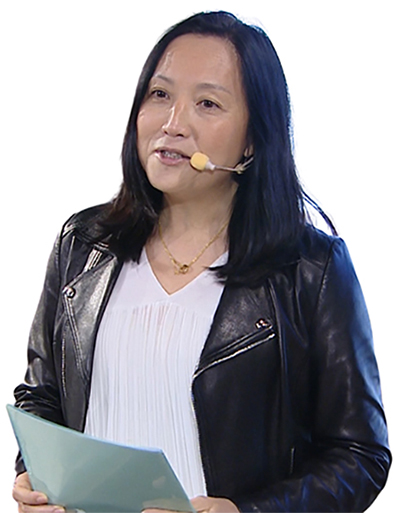 Adtech is globalising the DOOH business, especially with programmatic DOOH gaining traction in different markets. Do you see a global DOOH ecosystem also taking shape, where companies from different parts of the world are able to collaborate with one another more seamlessly to develop DOOH solutions?
Adtech is globalising the DOOH business, especially with programmatic DOOH gaining traction in different markets. Do you see a global DOOH ecosystem also taking shape, where companies from different parts of the world are able to collaborate with one another more seamlessly to develop DOOH solutions?
Until recently, the only genuinely global names in our space were media owners: JCDecaux and Clear Channel Outdoor. With its digitisation and now its foray into programmatic, our industry has seen the emergence of new global companies -- Broadsign, Hivestack, Vistar Media and others -- that are transforming DOOH into a platform where tech stacks can be easily combined, and media inventories made effortlessly accessible, across geographies.
It was only natural for Quividi, with its high fidelity, real-time, IAB-compliant impression data and presence in 80+ countries, to leverage these platforms and become an essential part of the programmatic DOOH stack globally. We have now integrated with the most prominent programmatic DOOH players around, and together, we can help raise audience standards across markets and bring new monetisation models to media owners.
Is this also contributing to the creation of more vibrant ecosystems for DOOH startups in different geographies?
Yes, we see new DOOH formats being launched in different geographies that natively leverage programmatic DOOH and real-time audience data to differentiate and monetise better.
Smart machines, for instance, are more and more fitted with advertising screens connected to programmatic pipes for their monetisation. In the USA, Quividi collaborates with AdPlanet and their thousands of screens installed on top of smart retail machines.
EV charging stations are another example. Most of the units deployed are equipped with screens and monetised programmatically. We are lucky to work with innovative companies in that space, such as Swiftmile in the USA or ChargeEuropa in Europe.
Quividi helps software, hardware, channel and creative partners to innovate and become competitive? Please share some of the highlights of your company’s engagements in this sphere?
Quividi helps any screen operator optimise their screen communication and monetise better their media inventory. With that in mind, Quividi has adopted a “liquid” strategy where our solution and data can be easily accessed and leveraged by operators from many different channels and configurations.
For instance, we’ve launched a Sampling & Extrapolation product that allows network operators to estimate the audience of their entire DOOH inventory by equipping only a subset of their screens with Quividi’s platform. It drastically lowers the constraints and costs to get high-fidelity DOOH audience analytics.
We also invest much in data science to extract more value from our analytics. For example, in collaboration with our end-users, we mine millions of data points to analyse the DNA of their screens, which could be used to segment and monetise a network by clusters, and map the anatomy of their campaigns to pinpoint what makes people pay attention in a content (e.g. what colours, what calls to actions, etc.).
Regarding programmatic, we’ve already integrated with pDOOH platforms, enabling media owners to upload their audience impressions automatically into their SSPs as frequently as needed, removing all manual work on their end.
On the creative side, we work with media owners and agencies to help them design the most effective targeted campaigns to reach their key demographic targets or conceive unique brand experiences using more sophisticated context-responsive interactive scenarios. Our solutions deliver actionable audience insights for brands to optimise their marketing and media strategy.
Regarding the infrastructure ecosystem, we currently work with a selection of CMS partners to embed our solution in their software and have Quividi available directly from their interface with just one click. It comes on top of our integration with 30+ leading CMS that provides media owners with audience insights for each content played back on their screens.
On the hardware side, Quividi is blessed to have a partner like Intel that helps us leverage their technologies and capabilities. We have integrated two new solutions based on Intel’s OpenVino framework into our audience & content intelligence platform: a body detector and a vehicle detector, that provide media owners with the most comprehensive audience impressions.
We are also expanding our offering into ARM and SOC infrastructures to help a new wave of place-based media owners constrained to low CPU platforms - such as Smart Machine operators - access our high-fidelity data.
As OOH/DOOH businesses retrace the growth path in 2021, do you see technology playing a bigger part in this industry’s revival and growth?
Technology is a means to an end for a more agile and digital OOH.
Technology is powering programmatic DOOH, which has grown rapidly over the past two years and is here to stay. It will help DOOH capture a larger share of ad investment in the future by letting media owners tap into new advertisers and media buckets.
Technology also powers audience measurement. Investment in real-time audience data will continue, as it is a much-needed complement to programmatic DOOH and an enabler of new growth-generating models such as guaranteed impressions, pay-per-views, dynamic content optimisation and real-time campaign adjustments.
Looking ahead, what in your view are the top 3 areas of technologies / solutions that will power OOH/DOOH growth globally, and how is Quividi participating as the growth enablers?
We see retail communication and DOOH converging to create an enhanced Retail Media, where different types of sensors and screens of all shapes and forms - from ESL-type digital screens to large LED panels - are natively integrated along the shopper journey. It will let brands engage shoppers at various points of interest and convert them at the moment of truth. With its high-fidelity data, Quividi can help monetise those screens, bring unique insights about the shopper's behaviours at key points of interest and optimise shopper activation.
Audience data enrichment is another area that will grow our market globally. We believe that media owners and Joint Industry Currencies worldwide will start relying on real-time computer vision data to combine it with mobile data. Each set of data brings its benefits: mobile data can retrace an individual's journey and draw its behavioural profile, while computer vision data brings a real-time, laser eye focus on the audience engagement in front of a piece of content. This combination brings enriched insights and supports new monetisation models that benefit the industry.
Finally, and as mentioned earlier, programmatic DOOH will continue its expansion and help our market grow. But to level with online programmatic, programmatic DOOH will have to rely more on real-time data.
At Quividi, we have approached programmatic pragmatically. We first started by pushing our partners’ historical audience data - what we call an Average Unit Audience - to SSPs. Then, as demands for audience quality increased, we built automation to provide near real-time impression multipliers to platforms. These impression multipliers are generated daily with fine granularity, e.g. by the days of the week and the hours of the day, for each network's screen. We are now ready to address the next step where we could let our data flow in true real-time into SSPs. It will be much needed when pipes allow for true real-time DOOH campaigns, which isn’t always possible today.

Stay on top of OOH media trends



